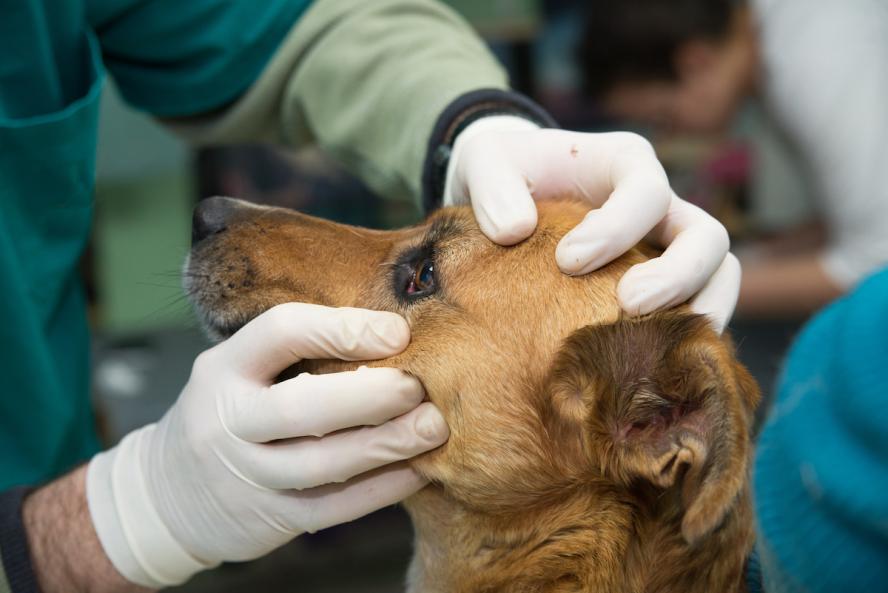-
About
- Leadership & Faculty
- News & Events
-
Academics
- Graduate
- Advanced Clinical Training
- Continuing Education
- Academic Departments
- Academic Offices
- Simulation Experiences
-
Student Life
- Offices
-
Research
-
Hospitals & Clinics
- Emergency Care
- Hospital Services
-
Community Outreach
- Volunteer
Eye Exams for Dogs
Five Things to Know

Similar to humans, caring for the eyes of our pets is an important aspect of maintaining their health and wellness. Here are five things to know about eye exams.
Why are veterinary eye exams needed?
There are three scenarios in which dogs (or cats, or other veterinary patients) may undergo an ocular examination: as part of either a general wellness exam or an overall assessment when they are being treated for an illness or injury, or because there is a specific concern about an eye problem (more information on that scenario appears below).
What is involved in a veterinary eye exam?
As a part of a general wellness exam, the veterinarian checks that the eye responds properly to hand motion and light, examines the front part of the eye (the eyelids, conjunctiva, cornea, iris/pupil, and lens) for any obvious abnormalities, and looks at the back of the eye (the retina and optic nerve) with a special lens or scope. This is a basic screening exam like the rest of the wellness exam. General practice veterinarians are skilled at this type of screening and often pick up abnormalities that then prompt referral to an ophthalmologist.
Eye exams done as part of assessment for other types of illness and injury may include a few more steps, such as fluorescein staining to look for corneal scratches or ulcers, measurement of intraocular pressure, or dilation of the pupil to allow for a more thorough examination of the back of the eye. Eye examinations in this situation can be helpful for several reasons.
Pets who have sustained significant trauma, such as being hit by a car, can also have injuries to the eyes that require treatment. Pets with other illnesses sometimes also have eye issues from that illness that require treatment but examining the eyes can help diagnose an illness or confirm another finding.
Finally, pets may have an eye examination performed because of a specific concern about the eyes. These examinations are more thorough and include testing of tear production, vision testing, detailed examination of the structures of the eye, fluorescein staining of the cornea, and measurement of intraocular pressure.
Watch for symptoms of eye problems
Signs of eye problems may include changes to the appearance of the eye and surrounding structures (redness, cloudiness, discharge, dilated or uneven pupils, lumps or bumps, etc.), discomfort (squinting, rubbing at eyes, shying away when the head is touched), or changes in vision (bumping into things, decreased activity level, unwillingness to do certain things like stairs or jumping into car).
Preparing for an eye exam
To prepare you can accustom your dog to allow handling by people he or she doesn’t know, to sit still when needed, and to permit handling of the face and gentle opening of the eyes.
Are annual eye exams required for service dogs?
While not required, they are a good idea because vision is so important for service dogs. Annual screenings can provide early detection of problems or genetic issues that may be developing in these dogs, who are often purpose-bred for their jobs. Since 2010, the American College of Veterinary Ophthalmologists has partnered with Epicur Pharma/Stokes Healthcare to offer free annual examinations to service dogs each May. We have really enjoyed taking part in this, helping these special animals, and meeting a lot of nice dogs and people.
Dr. Stephanie Pumphrey, V08 (she/her/hers), is an assistant professor of veterinary ophthalmology in the Department of Clinical Sciences at Cummings School of Veterinary Medicine at Tufts University.